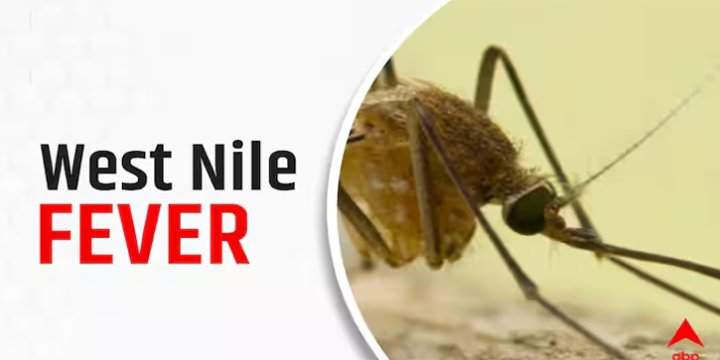WEST NILE FEVER
The Kerala government on Tuesday (May 7) said that cases of West Nile fever have been reported from three districts in the state – Thrissur, Malappuram and Kozhikode. One person died of the viral disease on Monday and six other cases have been reported in recent days.
State Health Minister Veena George has now asked these regions to stay vigilant and ordered that steps be taken for mosquito control, according to a statement released by her office.
According to the health department, West Nile virus can cause a fatal neurological disease in humans. However, approximately 80 percent of those infected will not show any symptoms.
What is the West Nile Virus?
The West Nile Virus (WNV) is a mosquito-borne, single-stranded RNA virus. It is a flavivirus and is related to the viruses that cause Japanese encephalitis and yellow fever.
How does the West Nile Virus spread?
Culex species of mosquitoes act as the principal vectors for transmission. Infected mosquitoes spread the disease among humans and animals, including birds, which are the reservoir host of the virus.
Mosquitoes become infected when they feed on infected birds, which circulate the virus in their blood for a few days. The virus eventually gets into the mosquito’s salivary glands. During later blood meals (when mosquitoes bite), the virus may be injected into humans and animals, where it can multiply and possibly cause illness,” says the World Health Organisation (WHO).

ARE THERE OTHER WAYS IN WHICH IT CAN BE SPREAD?
WNV can also spread through blood transfusion, from an infected mother to her child, or through exposure to the virus in laboratories.
CAN IT SPREAD VIA CONTACT?
It is not known to spread by contact with infected humans or animals. To date, no human-to-human transmission of WNV through casual contact has been documented, says the WHO.
CAN IT SPREAD THROUGH EATING INFECTED ANIMALS?
According to the US Centers for Disease Control and Prevention (CDC), it does not spread “through eating infected animals, including birds.”
WHAT IS THE INCUBATION PERIOD?
According to CDC, incubation period for WNV disease is typically 2 to 6 days, but can be 2 to 14 days, and can be several weeks in immunocompromised people.
WHAT ARE THE SYMPTOMS OF WNV?
The disease is asymptomatic in 80% of the infected people. The rest develop what is called the West Nile fever or severe West Nile disease. For them, the symptoms include fever, headache, fatigue, body aches, nausea, rash, and swollen glands.
“it is estimated that approximately 1 in 150 persons infected with the West Nile Virus will develop a more severe form of disease. Recovery from severe illness might take several weeks or months. Some effects to the central nervous system might be permanent,” says the CDC.
It usually turns fatal in persons with comorbidities and immunocompromised persons (such as transplant patients). But the death rate is relatively low.
WHAT IS THE TREATMENT FOR WNV?
No WNV-specific prophylaxis, treatment or vaccine is available. Only supportive treatments are given to neuroinvasive WNV patients.
Health authorities globally advice for personal protective measures to reduce the risk of mosquito bites, such as using mosquito repellents.
Public health departments are to also ensure larval source reduction, especially at breeding and resting sites for the mosquito vectors.
WHY IS IT CALLED THE WEST NILE VIRUS?
- The virus was first isolated in a woman in West Nile district of Uganda in 1937.
- It was identified in birds (crows and columbiformes like doves and pigeons) in the Nile delta region in 1953.
- Before 1997, WNV was not considered pathogenic for birds, but then, a more virulent strain caused deaths of different bird species in Israel, presenting signs of encephalitis and paralysis.
- In 1999, a WMV strain, believed to be one circulating in Israel and Tunisia, reached New York and produced a large outbreak that spread across the United States and eventually across the Americas, from Canada to Venezuela.
- WNV outbreak sites are found along major bird migratory routes. Today, the virus is found commonly in Africa, Europe, the Middle East, North America, and West Asia.
Note: Connect with Vajirao & Reddy Institute to keep yourself updated with latest UPSC Current Affairs in English.
Note: We upload Current Affairs Except Sunday.


